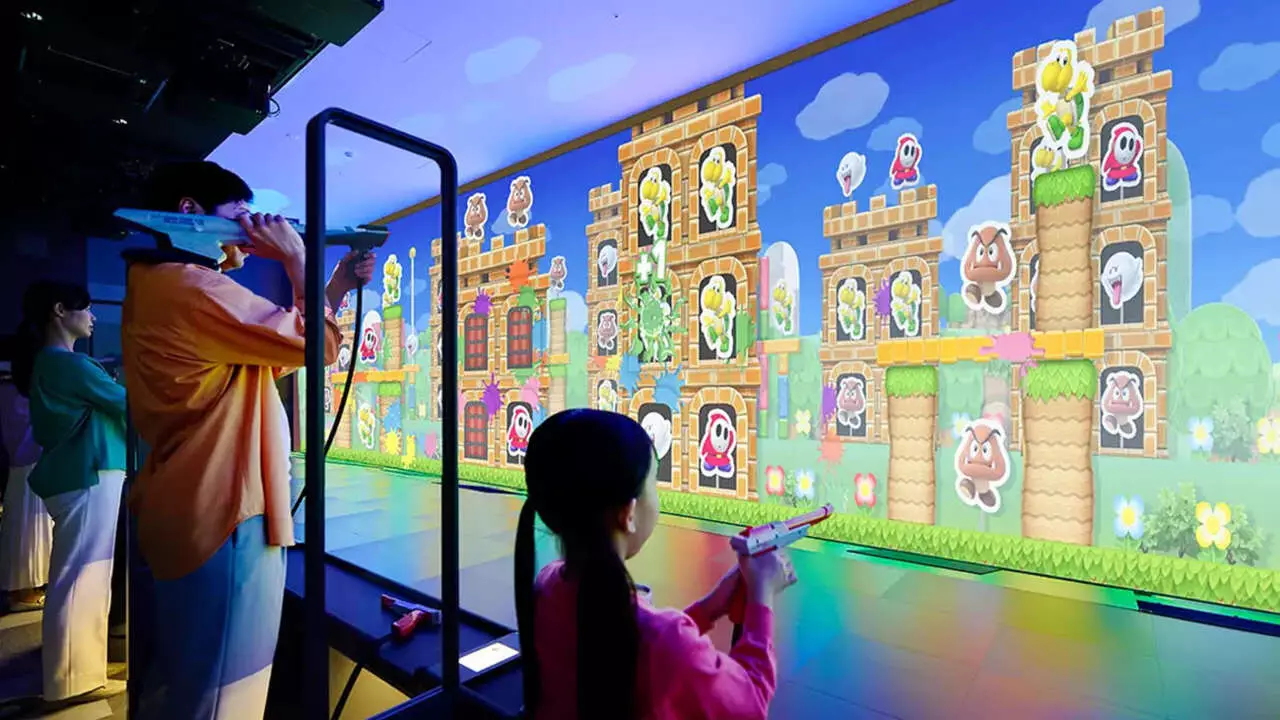The Nintendo Museum in Kyoto, Japan, recently opened its doors to an eager public, immediately igniting enthusiasm among gaming fans worldwide. This cultural landmark not only stands as a tribute to Nintendo’s storied past but also represents the company’s influential role in shaping the gaming landscape over the decades. Yet, the excitement surrounding the museum has also attracted less savory elements—scalpers, eager to capitalize on its allure.
Just two days after the museum’s grand opening, instances of scalping surfaced, with exclusive merchandise being listed online at exorbitant prices. Such opportunistic behaviors often tarnish the experience for genuine fans, which prompted the museum to take action. In a bid to curb these practices, the Nintendo Museum introduced strict limits on merchandise sales—one item per customer—to ensure fairness and accessibility for all visitors. These merchandise items, including controller-shaped cushions and a popular keychain collection, quickly became sought after, making their inflated resale prices all the more disheartening for devoted fans.
Amidst this backdrop, a specific case drew attention: a Wii Controller cushion was spotted on eBay for an astounding $500. This price tag underscores not just the value of the items but also the potential profitability of exploiting fan eagerness. Nintendo’s decision to restrict purchases is a commendable step that aims to mitigate such scalping, though the demand may generate unintended consequences, possibly fueling higher resale market rates.
Complimenting the museum’s merchandise issues are the vast crowds it continues to draw. Reports indicate that ticket sales have spanned out through the end of the year, illustrating an insatiable demand for a glimpse into Nintendo’s rich legacy. The museum is not only an exhibition of video game history but also a celebration of Nintendo’s broader narrative, dating back more than 100 years, weaving through various industries before settling into video gaming by the late 20th century.
Industry insiders, like Giant Bomb’s Dan Ryckert, have highlighted the profound emotional impact of the museum. Ryckert expressed how the experience resonated on a personal level, helping visitors nostalgically connect with their gaming milestones. This multidimensional approach to the narrative of gaming elevates the museum from a mere tourist attraction to a sanctuary for gaming history enthusiasts.
While the Nintendo Museum is a shining light in the realm of gaming culture, it faces the dual challenges of scalping and overwhelming popularity. The response to these hurdles reflects a broader concern within the gaming community: how to maintain genuine engagement and accessibility in an era increasingly marred by opportunism. As the museum navigates its inaugural days, it continues to honor its legacy while adapting to emerging trends and challenges. Ultimately, Nintendo’s ability to balance its celebrated past with the demands of today will determine not only the museum’s success but also the depth of connection it fosters with its ever-expanding fanbase.


Leave a Reply